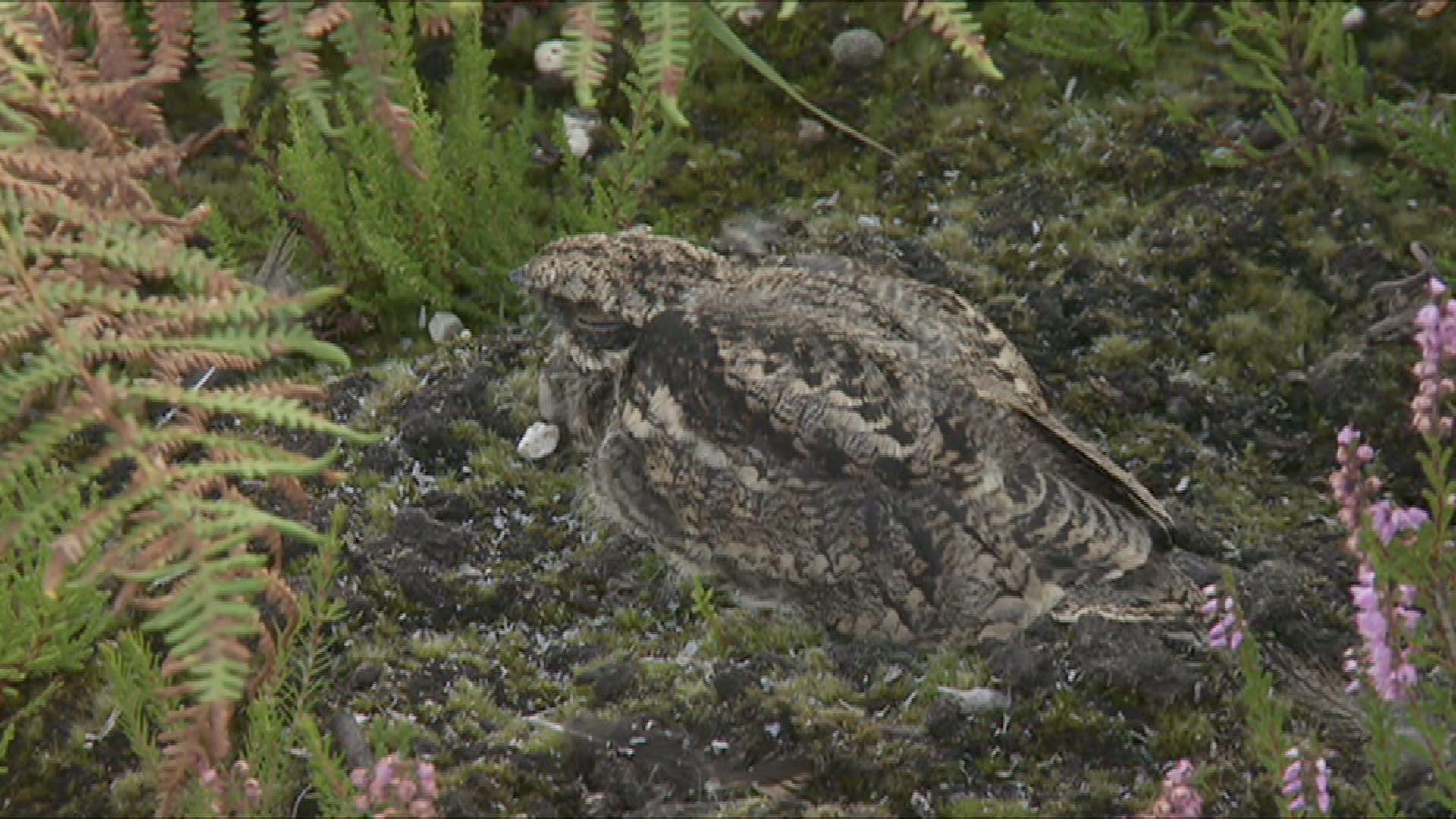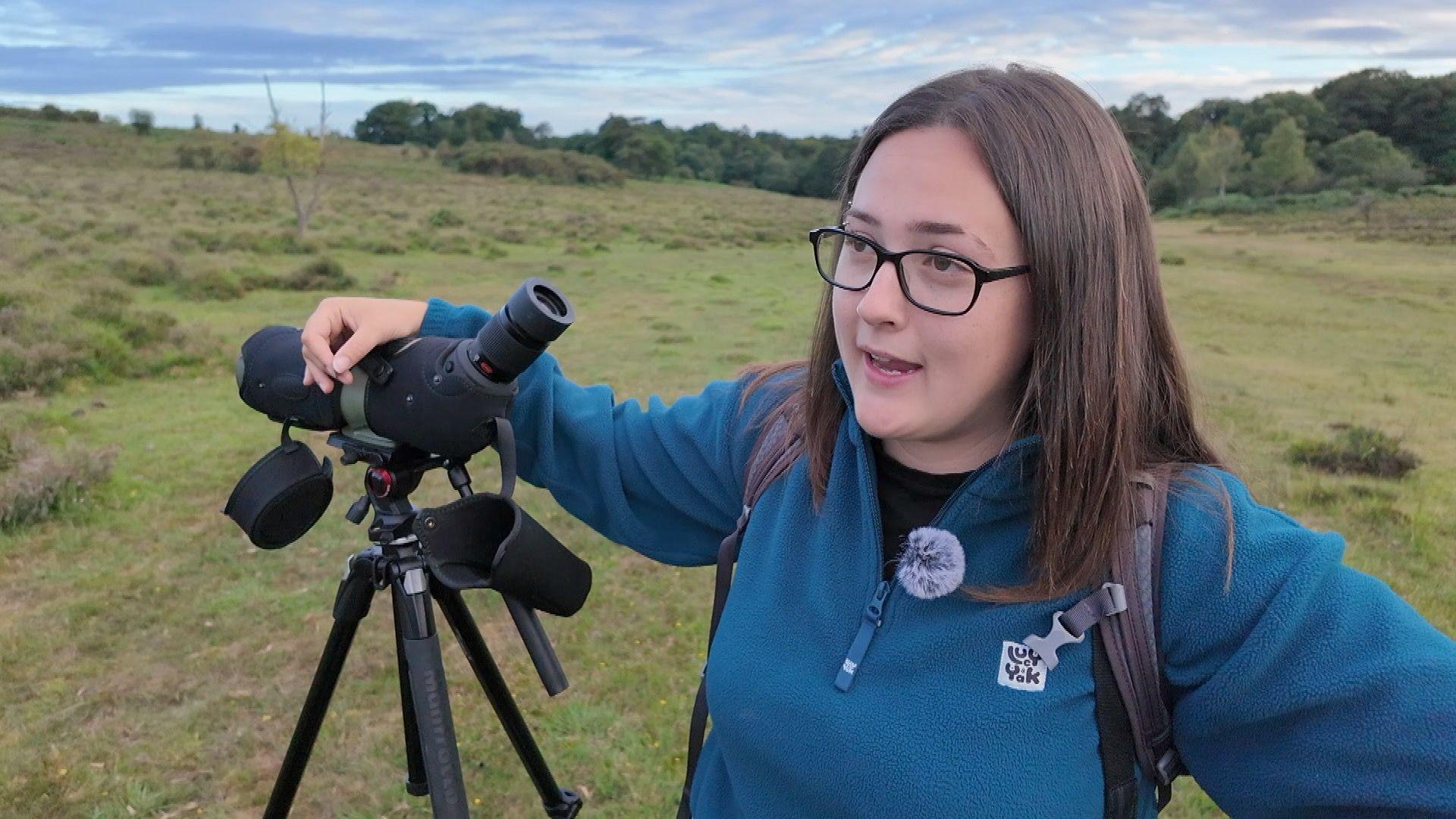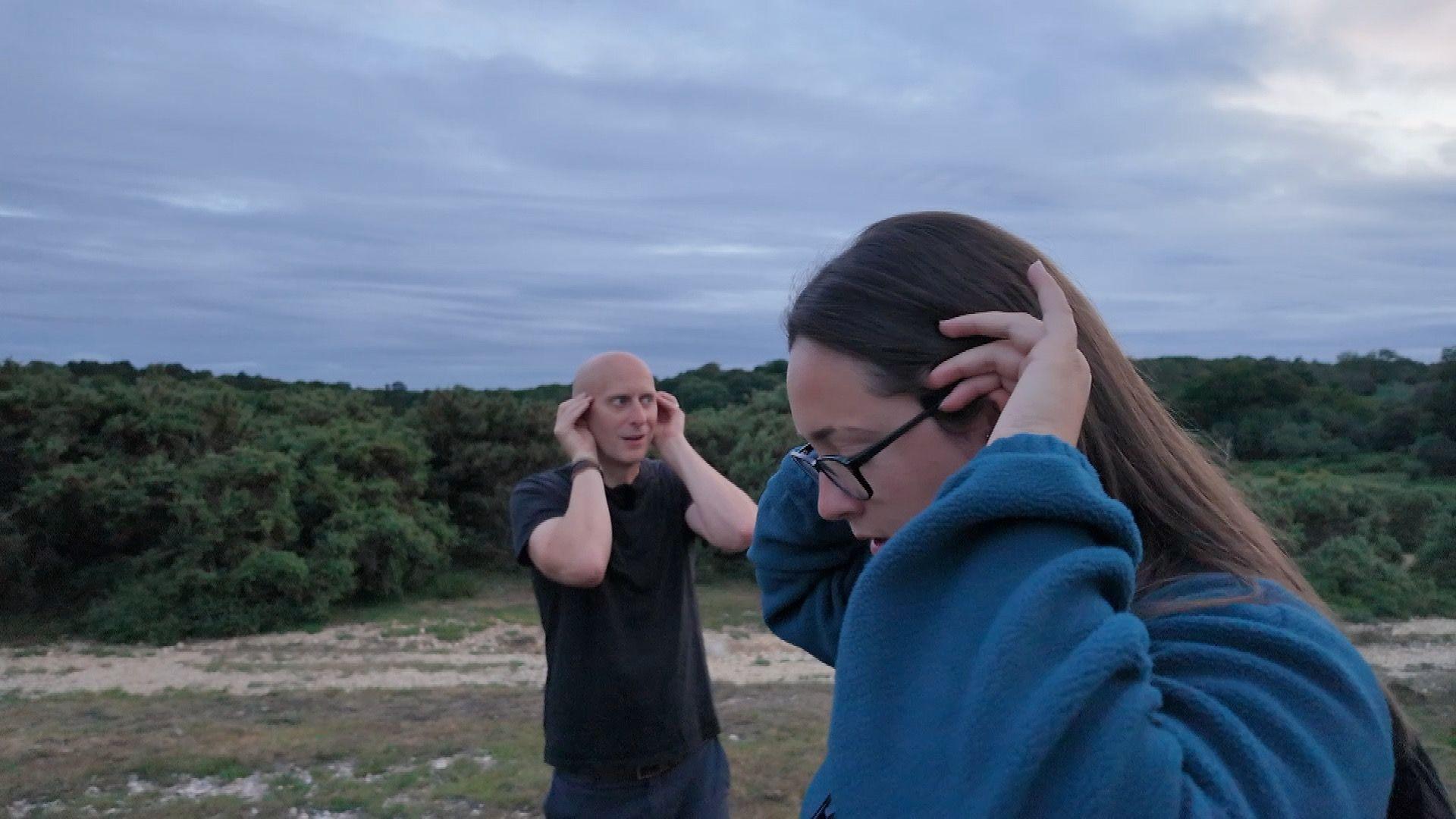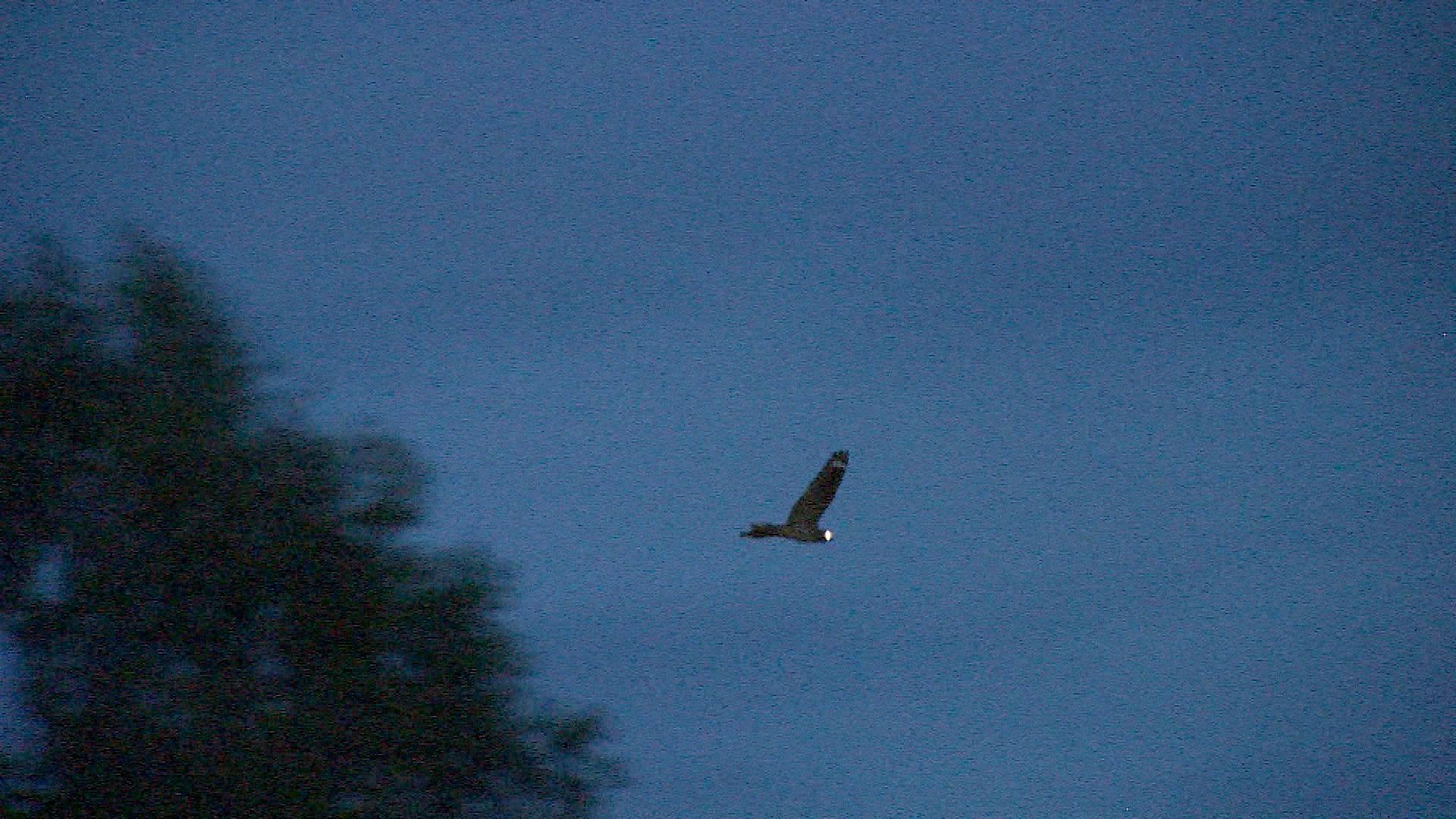Major heathland survey tracks nightjar population

A nightjar chick blends in perfectly with its surroundings on the heathland floor in the New Forest
- Published
The mysterious nightjar is among the species being tracked as part of the largest survey of heathland birds for more than 20 years.
The study, organised by the British Trust for Ornithology, will also focus on woodlarks and Dartford warblers.
The nightjar, which is surrounded by myth and folklore, journeys to the UK to breed, before flying back to the Democratic Republic of Congo at the end of the summer.
It is most numerous in southern England, and the work hopes to establish if it has continued its recovery and extended its range.

The mysterious Nightjar is Mya Bambrick's favourite bird and she has studied them extensively
"I absolutely love a nightjar. They are by far my favourite bird," says Mya Bambrick, Youth Representative with the British Trust for Ornithology.
We are standing in the middle of nowhere on heathland in the north of the New Forest. The light is fading fast and we have set off in search of the nightjar.
"They're such a unique species that we have here in the UK," Mya says.
"They are crepuscular, hence why we're out here at this time, so they're active at dusk and dawn.
"And they make an absolutely fascinating sound."
They are also experts at camouflage and only active in poor light, so trying to spot one, let along film one, is going to prove a challenge.
But while the nightjar can be hard to see, its strange call is instantly recognisable.

Luckily no-one can see us as we cup our ears to boost our chances of hearing the first chur of the evening
"The males make what we call a churr," explains Mya.
"Almost like an insect. I would say there's nothing else that looks and sounds like a Nightjar."
Mya encourages me to cup my ears as we both scan the horizons for the first sounds and glimpses of the bird.
A faint insect-like noise gradually starts to drift across the heath, before a sharp "peep" of a flight call rings out.
Mya excitedly points behind me as I spin round to catch my first glimpse of one.
"Flying now - flying just above the tree line to the right of that big tree."

A male nightjar comes to investigate, and its eyes reflect our camera light in the the gloom
It is not long before we see the distinctive silhouettes of nightjars, with their pointed wings and long tails, circling above.
At one point two males dart after a female disappearing in and out of trees on the edge of the heathland.
The faint churring has increased in volume, with flight calls ringing out around us.
"You can see why they're my favourite bird - I mean they're absolutely stunning," Mya says.
"We've had all the vocalisations. We had the churring, we had the 'kwik, kwik' flight call.
"And then we also had that whirring down call, so we know there's a female definitely on a nest very nearby."
In 2004 the Nightjar population was recorded as 4,600 territories across the UK.
This year's survey hopes to confirm anecdotal evidence of increasing numbers.
While continued conservation work to restore heathland has undoubtedly had a positive effect, the decline of our insect population may be a factor in the future.
In the meantime this is one bird that has just gained another fan.
Get in touch
Do you have a story BBC Hampshire & Isle of Wight should cover?
You can follow BBC Hampshire & Isle of Wight on Facebook, external, X (Twitter), external, or Instagram, external.